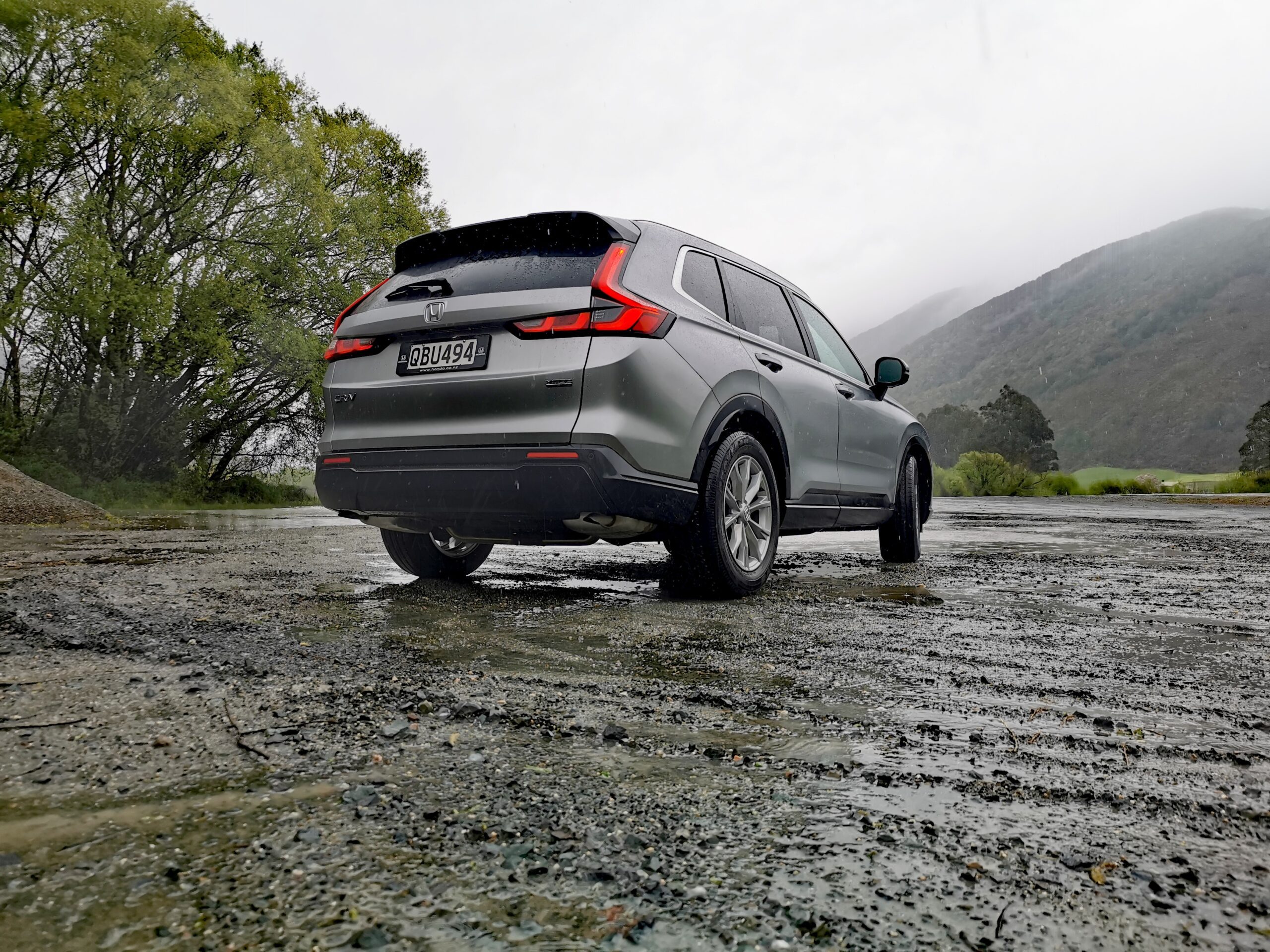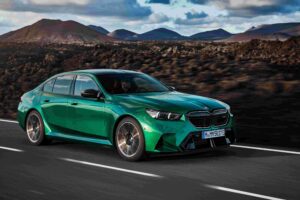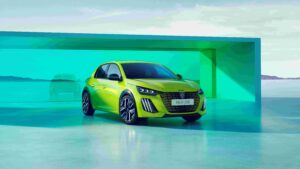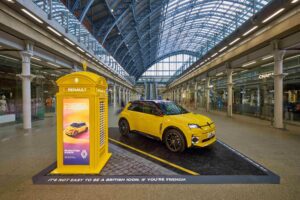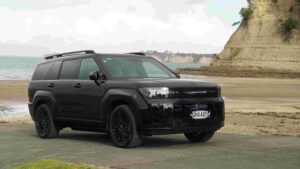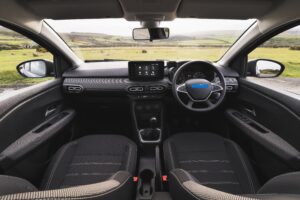With five generations of history to draw upon, Honda’s second most popular vehicle (after the Jazz) is back and literally bigger than ever. But wait there’s more, it sits on a totally new platform, has a new powertrain, new exhaust, fresh design (inside and out) and greater tech. We headed to Nelson at the top of the South Island to find out more.
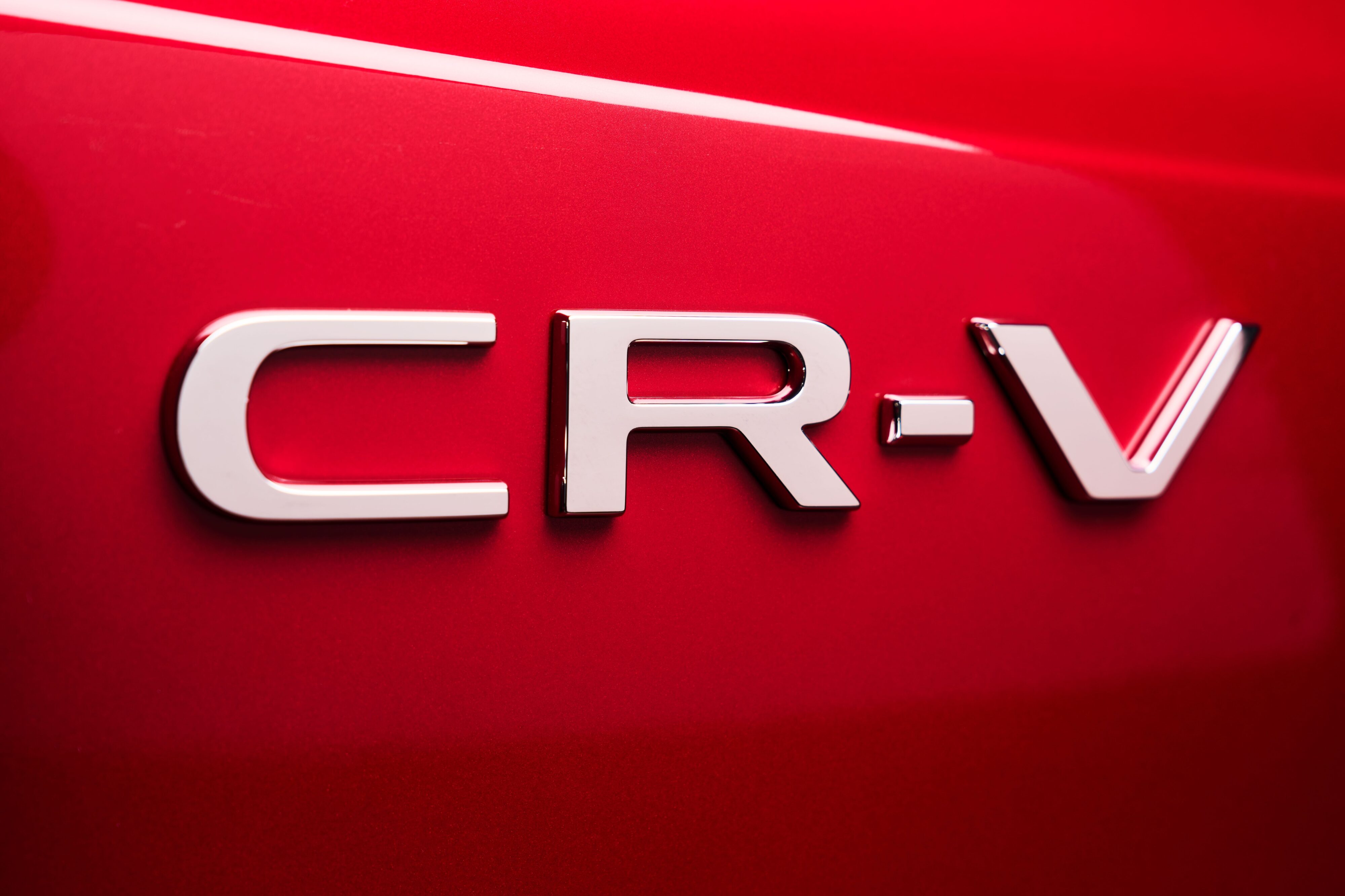
The first generation CR-V arrived on NZ shores in 1995 (-2001) and we’re reliably informed that we were the first in the world to get this groundbreaking SUV. The second generation (2001-2006) came with among other things a hefty 2.4L engine, while the third gen took the model from 2006 into double digits (2011). A DOHC was added to the fourth generation (2011-2016), with the fifth generation (2016-2023) gaining Honda’s legendary VTEC system.
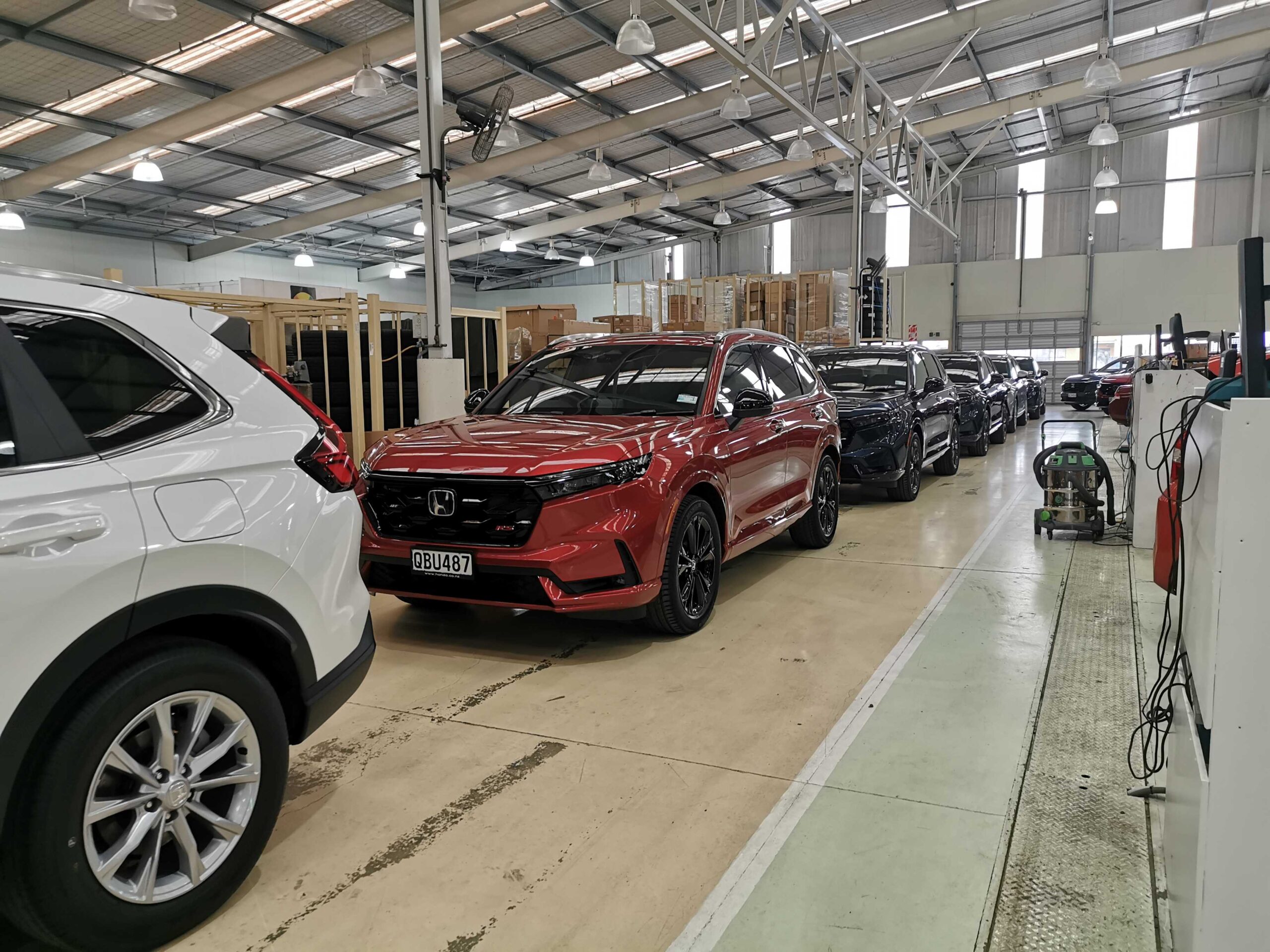
This brings us to the here and now, and the bigger and bolder 6th generation. There are three models in the line up, two now, the Sport 7 and the RS, with the Sport AWD arriving later this year. There are of course differences between the models, but let’s talk about what’s the same first.
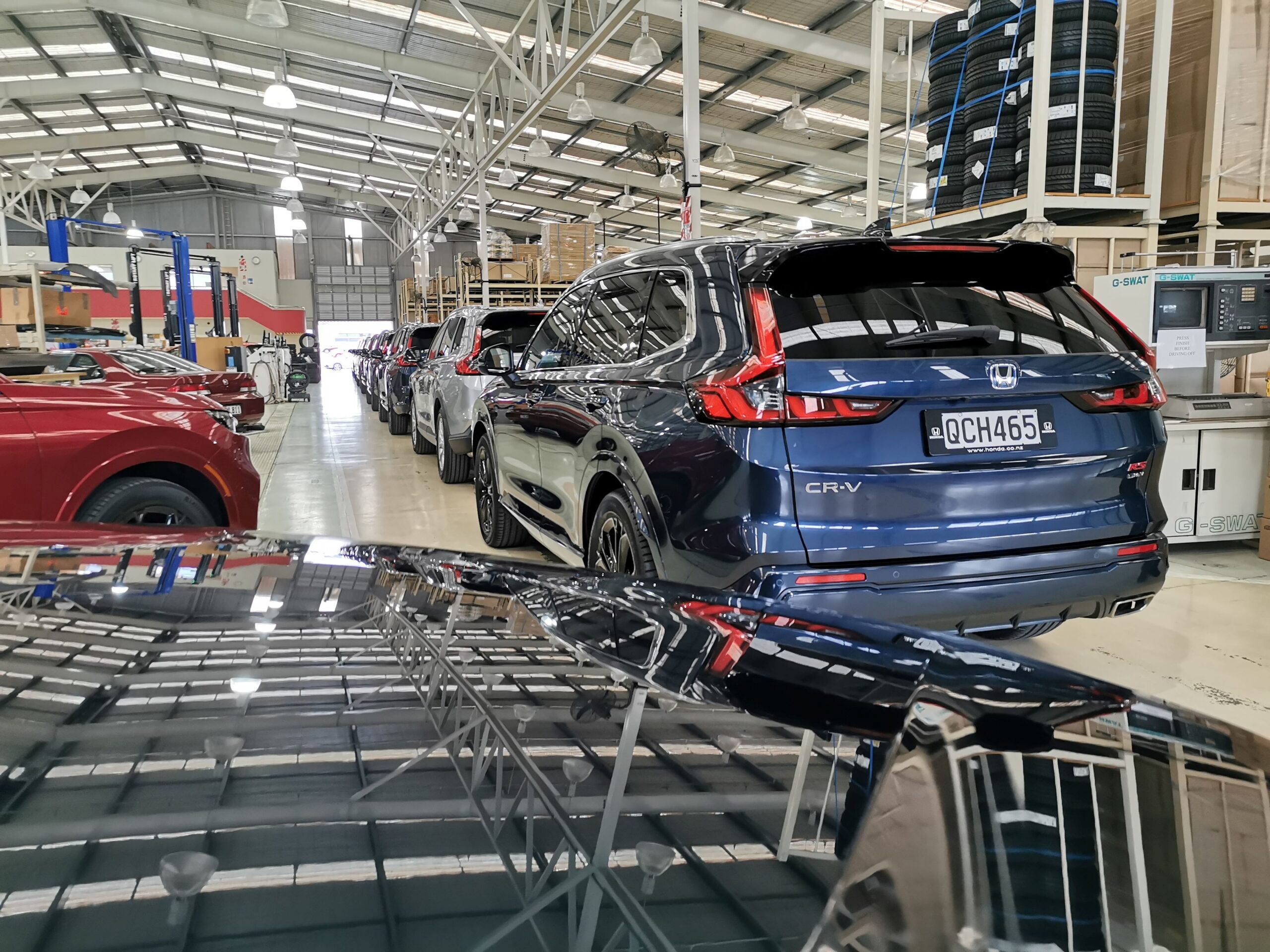
Essentially throughout the entire life of the CR-V since 96 in New Zealand, it’s gotten bigger (except for the really the third generation when it got a little bit shorter) and this is no exception it’s gotten longer +80mm it’s gotten wider +10mm and the wheelbase has increased by +40mm, this is to give you a smoother on road experience and achieve a sporty planted feel – as much as you can with with a medium SUV, so a very stable and planted to stance against a lot of the competitors that are in the medium SUV space.
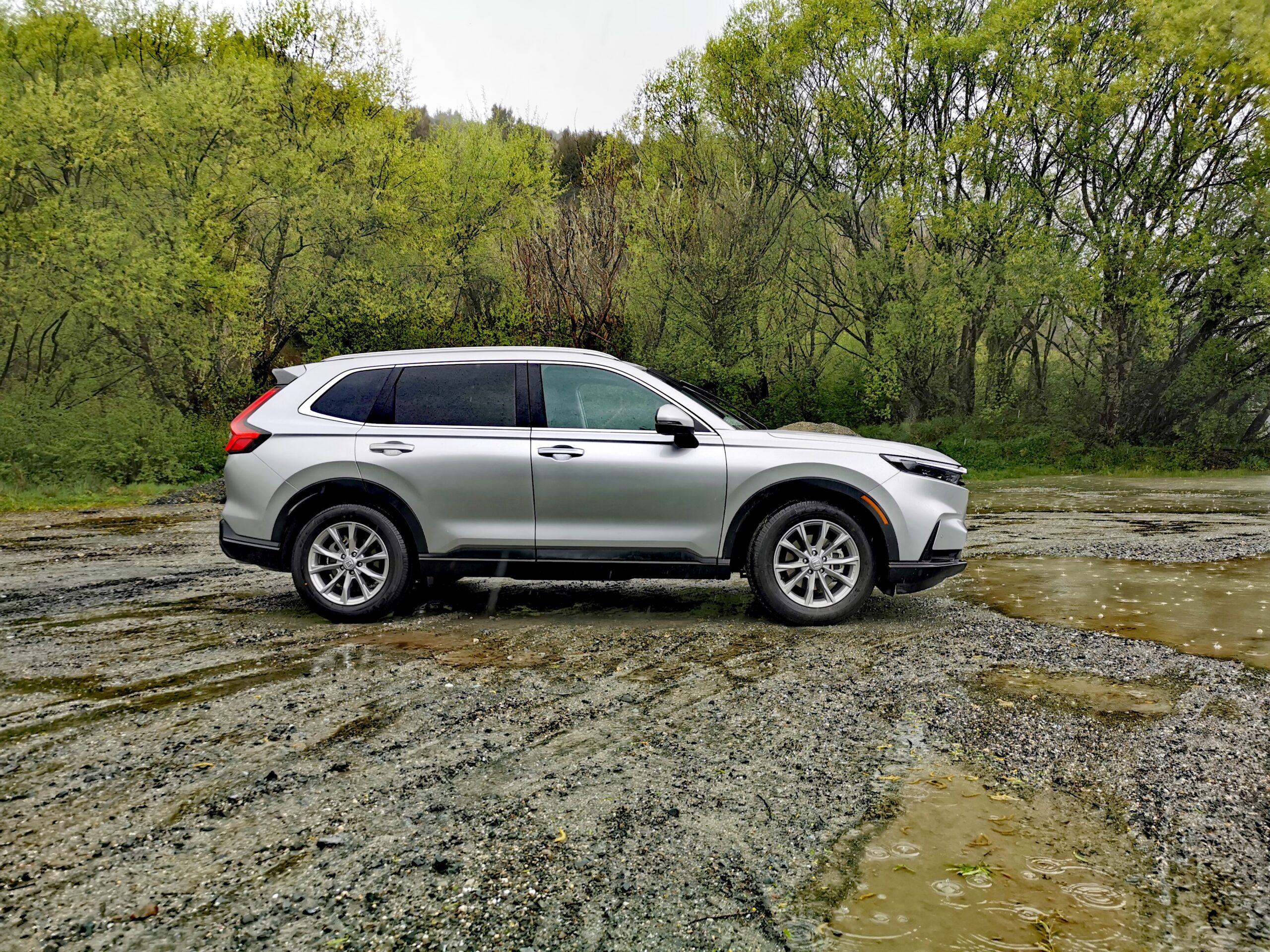
With the aerodynamics, Honda has smoothed out the underfloor which helps with flow. The front pillars have been pulled back to help with flow around the side of the car and to give more field of view. And then the roof spoiler and the real lamps are shaped in such a way to help with the vortex, to aid with the efficiency of the SUV.
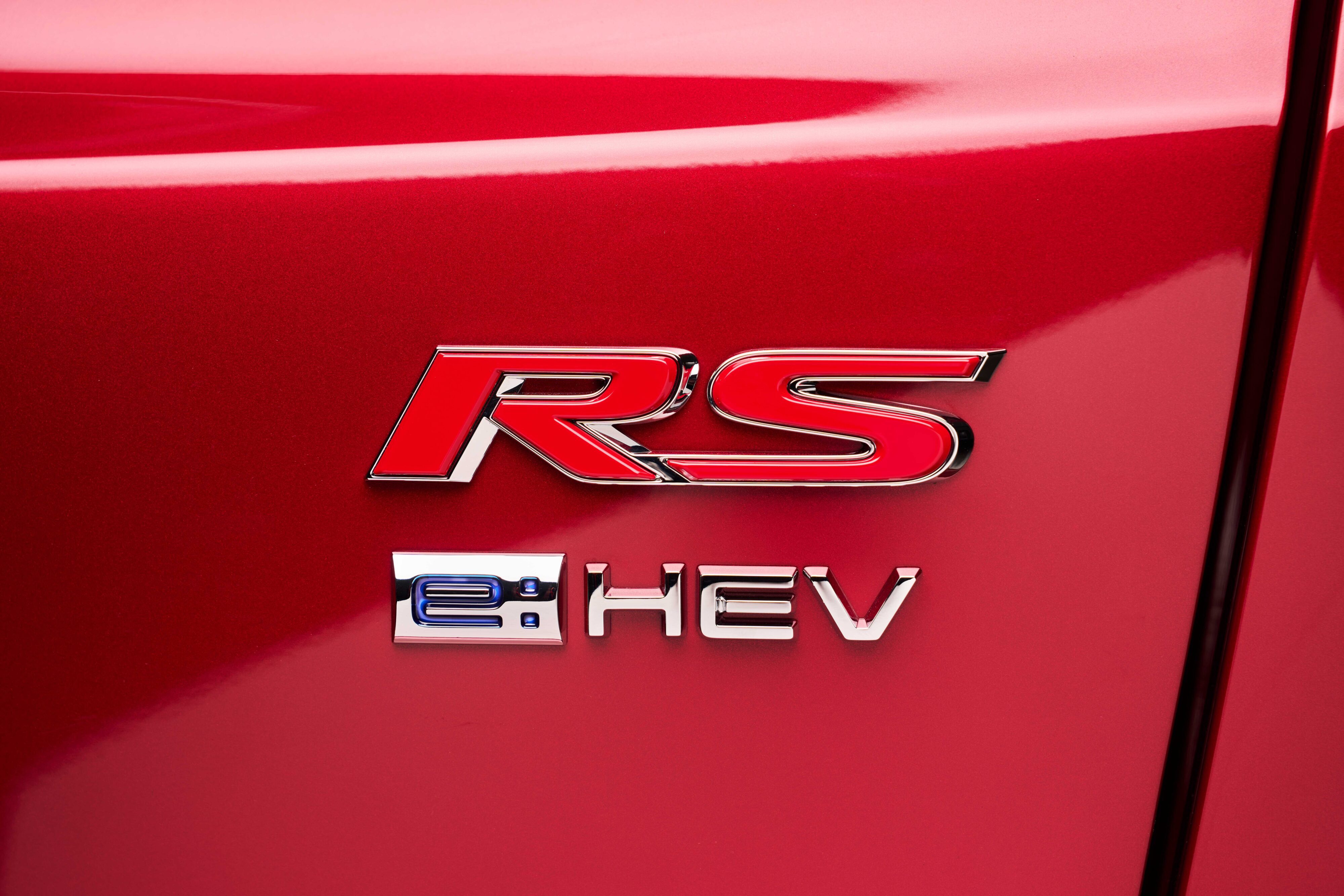
You’ll notice with the petrol version (over the e:HEV RS Hybrid), the underside, sills, spoiler and garnishes are all black, while the mirrors are painted. However, with the RS it’s more about the characteristics of the car, so it has piano black mirrors and side pillars and then body coloured finishes to most of the rest of the exterior. The front grille has also changed a bit too, with a more dominant look to the RS.
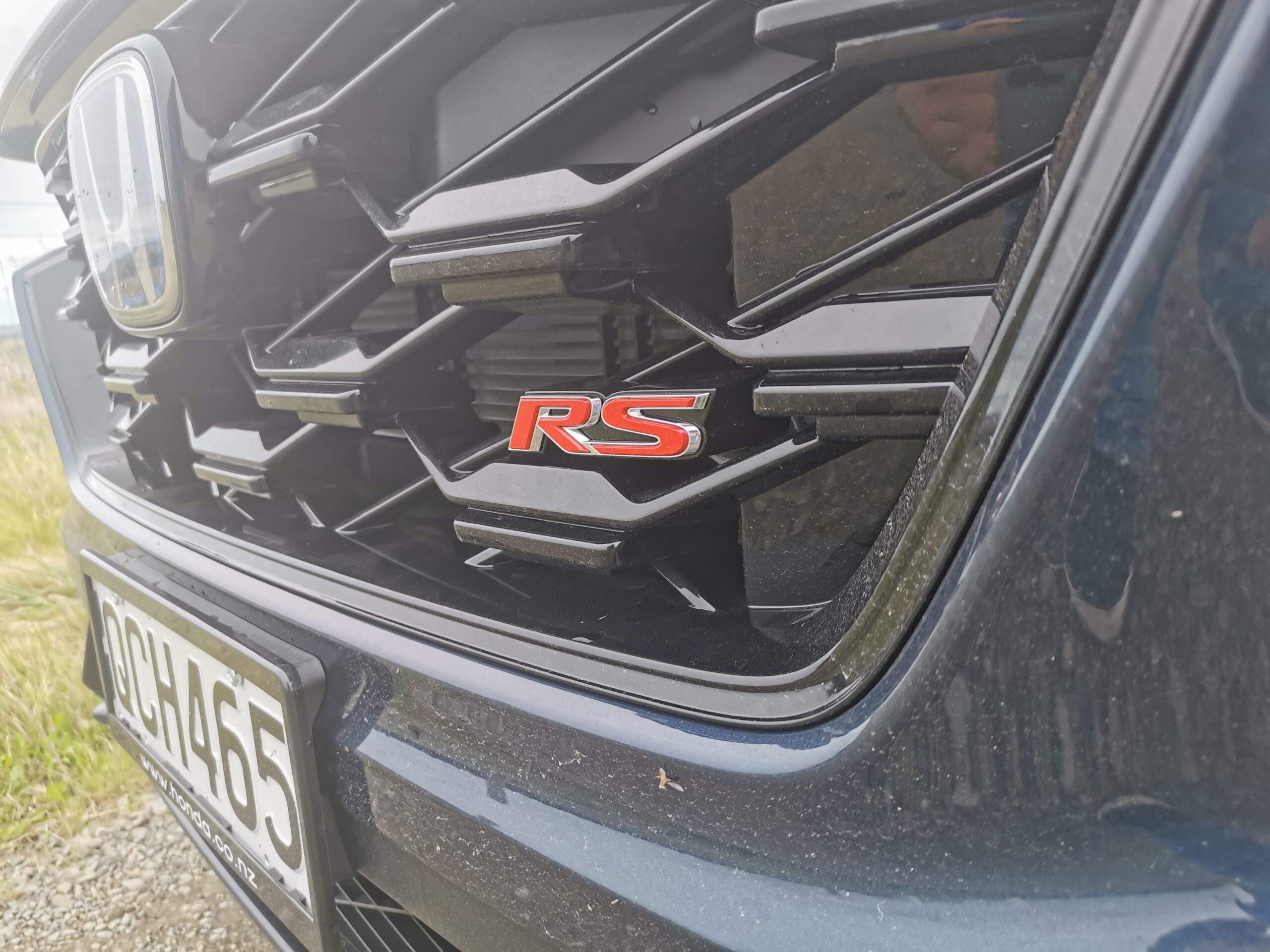
The 19-inch RS wheels really emphasise the sporty design, while the petrol versions are 18-inch and more of a hybrid between functional and sportiness. Adaptive driving beam (when operating at speeds below 10 km an hour, it’s always on the low beam. 10 to 40km/h it’s on a high beam but still dipped as opposed to the full high beam. But 40km/h + that’s when you get the full high beam on the open road – where you really need it) features in the RS and sequential indicators. The Petrol models get the standard high and low beam support.
In terms of colours, Honda has brought along those of the previous generation but added a Kenyan river blue which is new to New Zealand for the CR-V, so you’re bound to get one to match your mood.
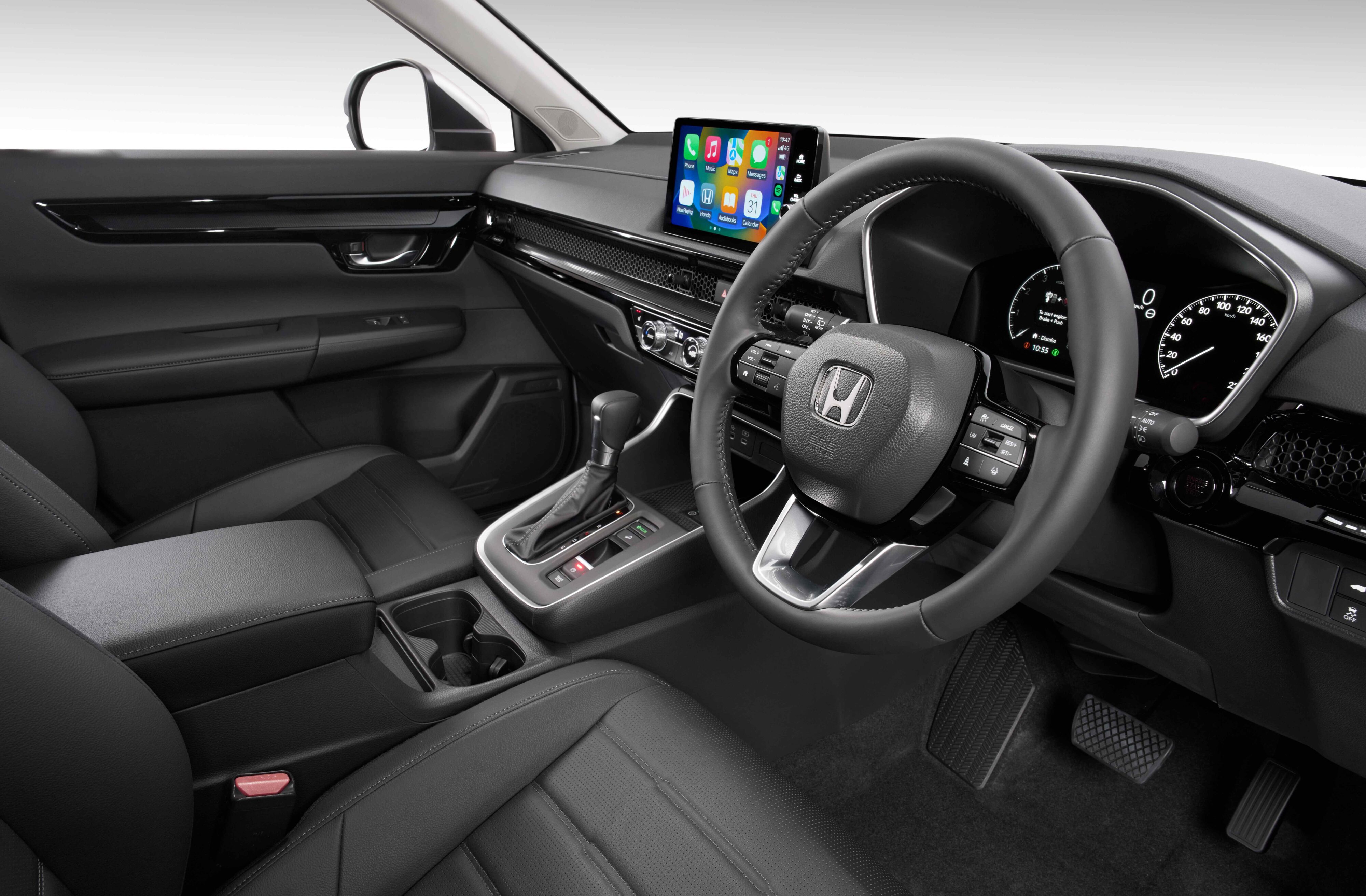
Step inside and there’s more room there too. The pulled back front pillars give an extra 4.4 degrees of view, while the seats have changed dramatically from the previous model, with really good reclining for passengers in the back (middle) and the second row (7-seater) also has a really nice design. Also, the steering angle has been reduced from 28 degrees to 25 and the deceleration selectors (paddles) help with the driving experience on the open roads.
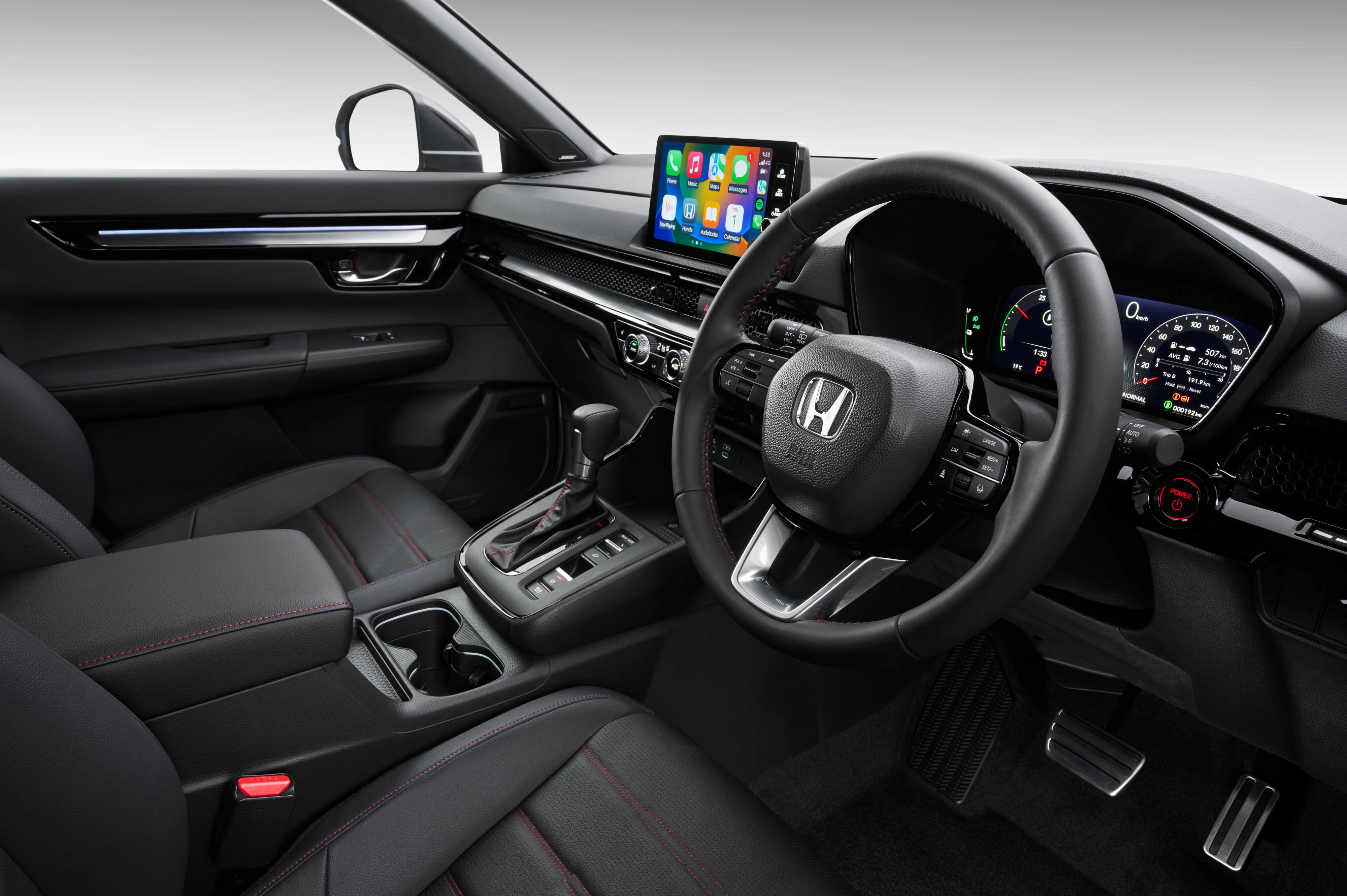
The new CR-V’s infotainment comes via a 10.2-inch display on the RS and 7-inch on the two petrol models, there is a wireless charger on all variants, while the drive mode selector on the e:HEV offers up sports, normal, and economy mode, Hill descent control, a B range for battery regen and a new power flow meter, so you can see what’s happening behind the scenes..
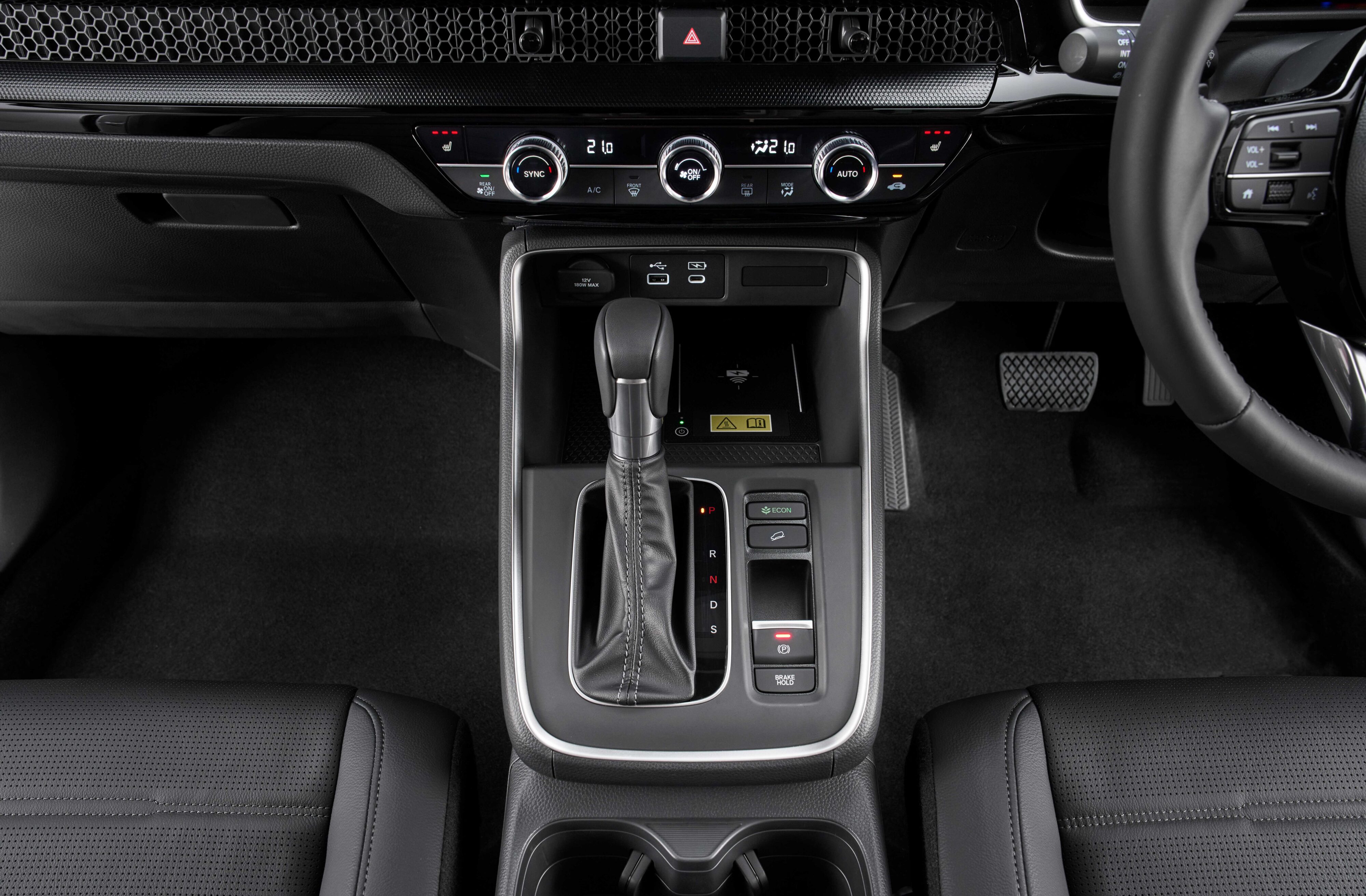
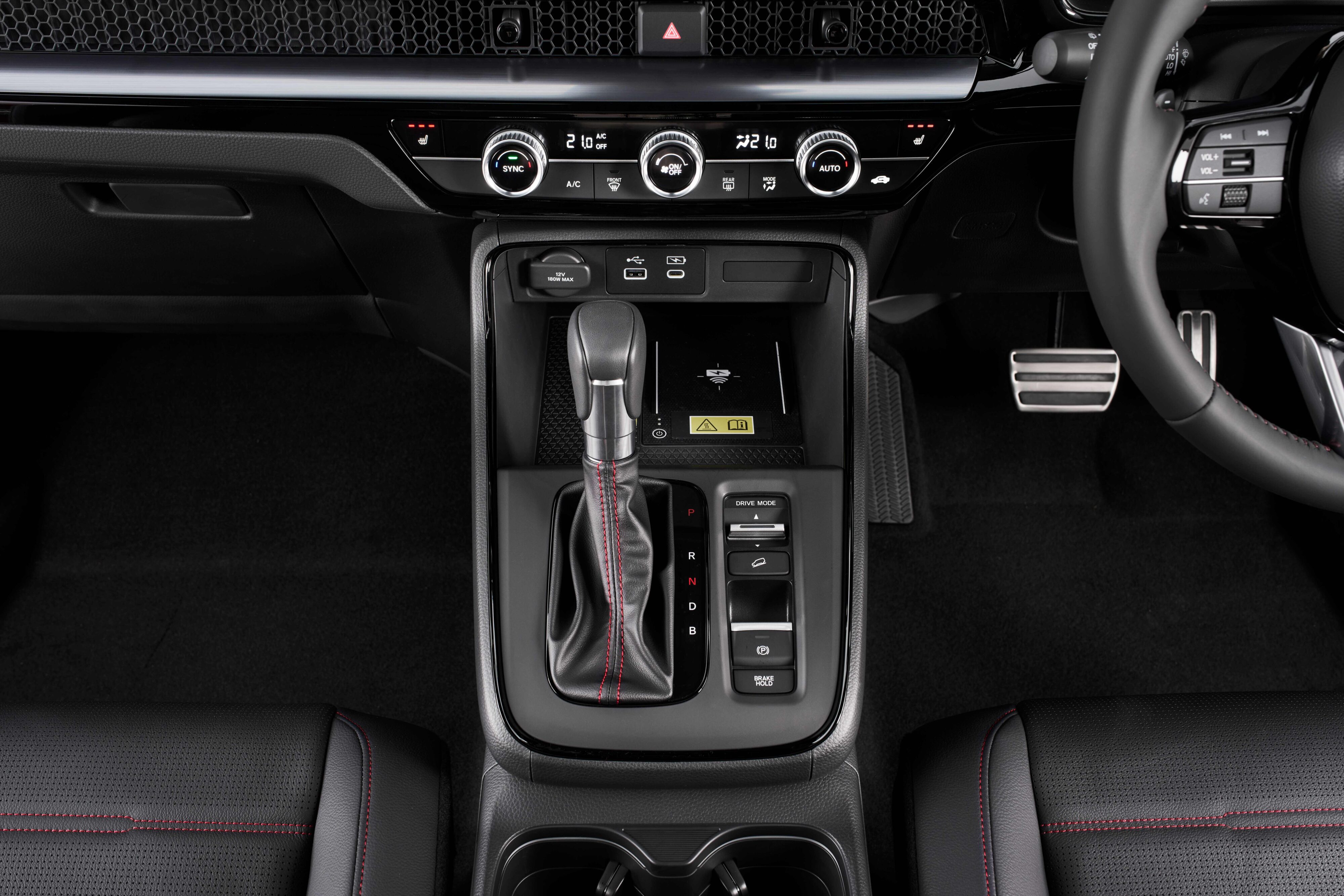
The interior on the RS really emphasises its sporty characteristics, the roof lining is blacked out, the leather seats are unique to the RS and has red stitching, which extends to the gearshift and the steering wheel.
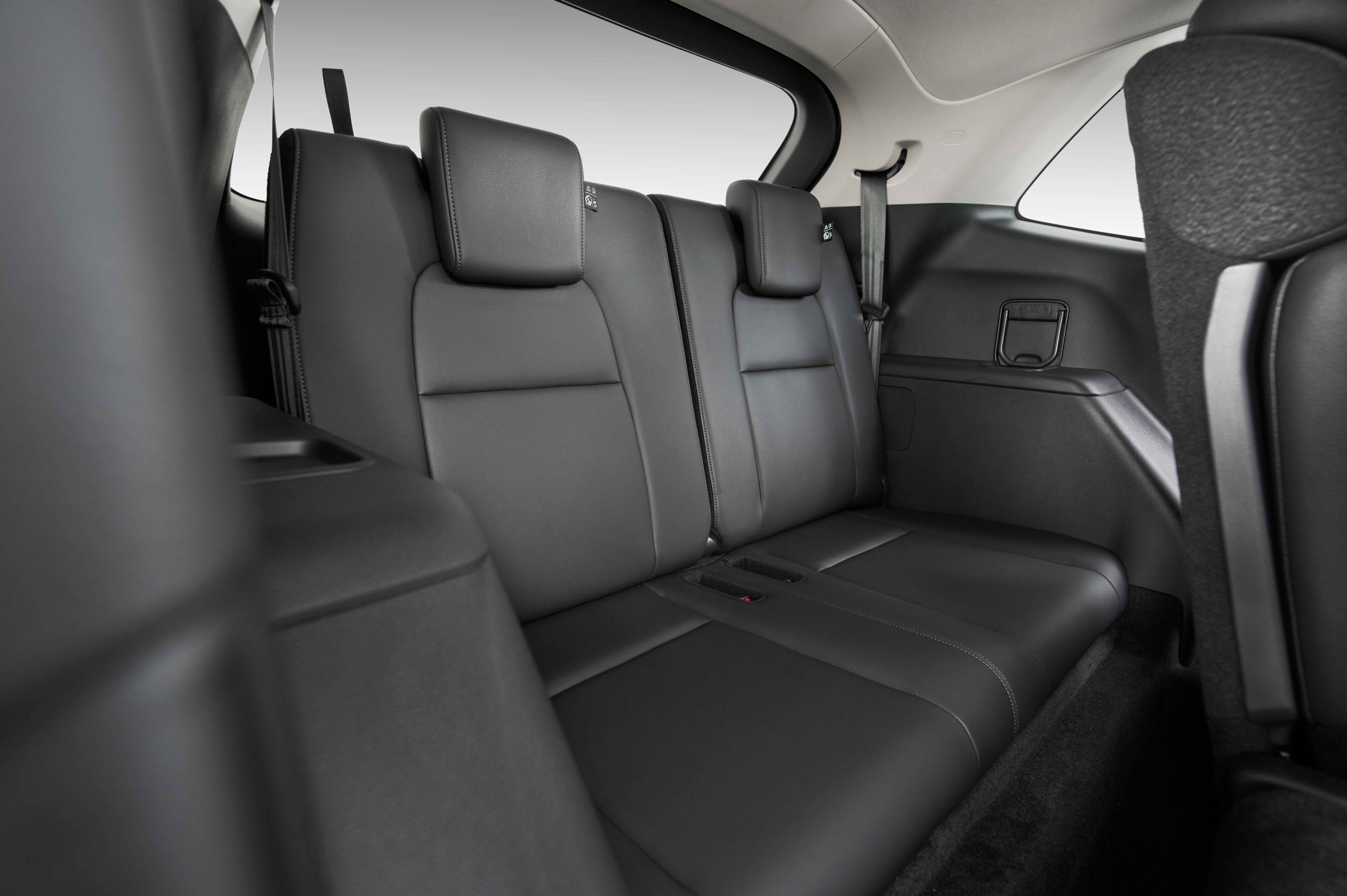
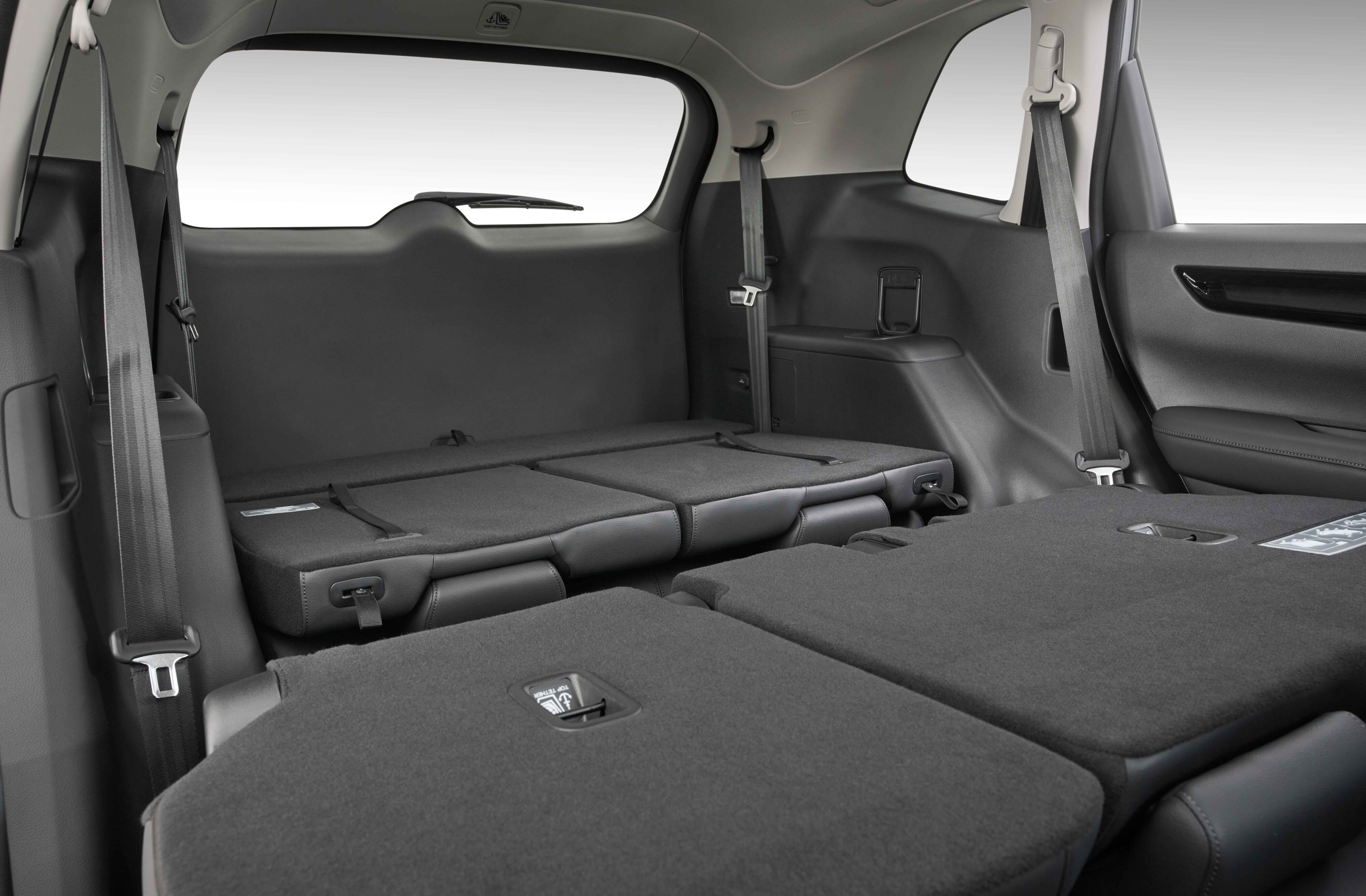
As mentioned, the interior space has been improved and so too has the seating configuration, so with ‘magic seats’ you can fit everything (including the kitchen sink) inside, oh and plenty of people too. Even the rear tail gate comes with a walkaway function so you can push the button, gather your belongings and walk away knowing that the CR-V will close and lock.
The Honda sensing suite has been given a big upgrade over the previous generation CRV, with the adaptive cruise control has minimal lag when other vehicles come into your lane, the lane keep function is more sensitive and aware, and the cameras and radars have a greater depth of vision.
Behind the scenes the new CR-V has been given a full makeover, with the 1.5L petrol turbo with CVT transmission (for CR-V Sport, and the CR-V AWD Sport) being further refined and improved, with torque on demand control optimization and adoption of high response turbine. That means the response is much faster and the turbo kicks in much earlier 1700 rpm vs 2000.
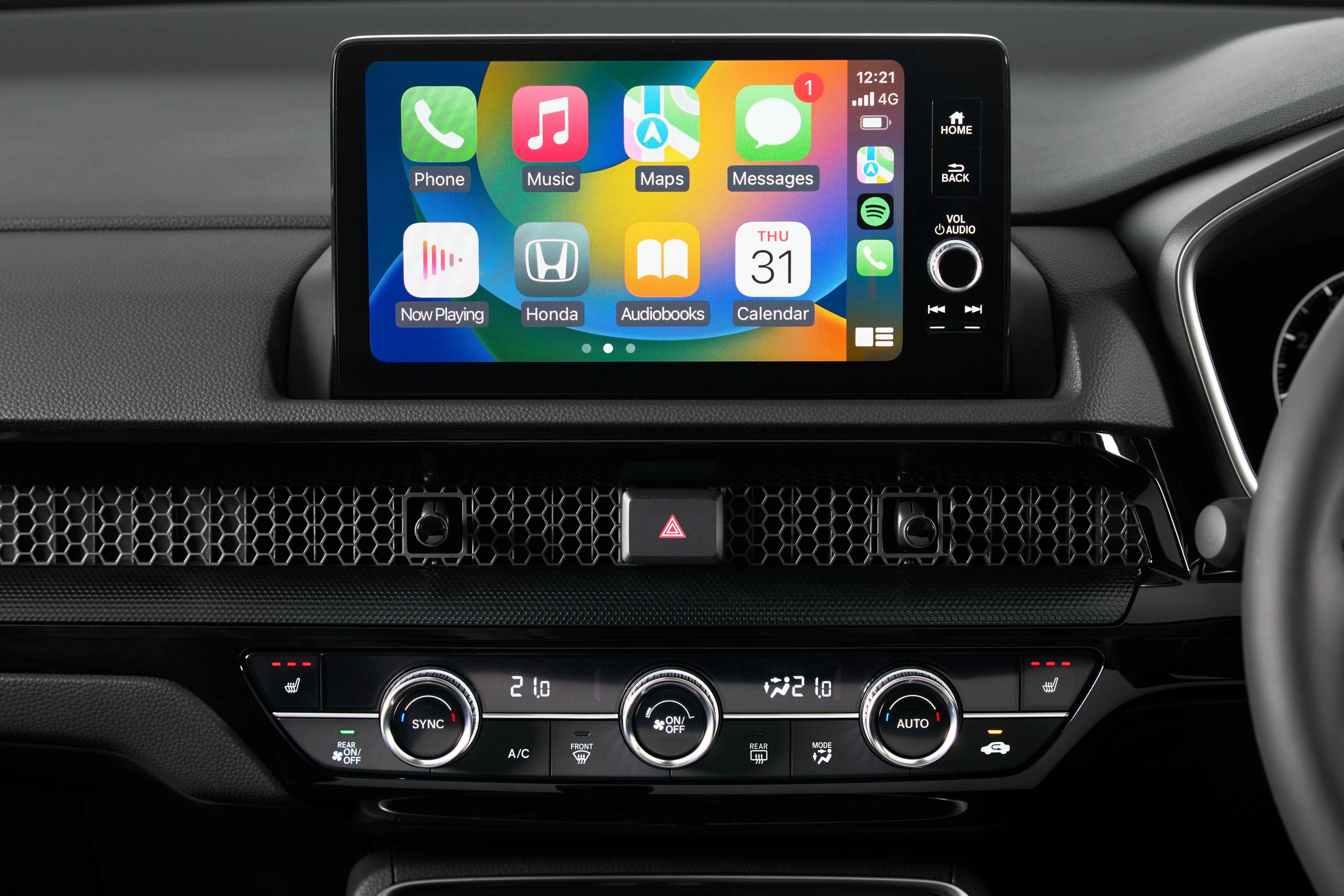
Also as well as the engine noise and vibration has been reduced considerably to improve the drive and feel, the CVT transmission has also been improved and includes Honda unique G design shift, which produces linear acceleration in response to accelerator operation without excessive engine revving. The step up shift control rhythmically changes the engine speed, which is also adopted for strong acceleration. So there’s a feeling of fun and sportiness when the accelerator pedal is fully open.
The second powertrain (in the RS) is a combination of a newly developed 2L direct injection Atkinson cycle engine with an E-CVT transmission with two internal motors (subtraction motor and the generator), which are more powerful than the ZR-V motors as well. The all new CR-V RS has also improved driving performance with enhanced and continuous acceleration throughout the rev range. It also reduces the petrol engine running frequency, which expands the EV mode range and considerably reduces the cabin noise. The maximum torque from the traction motor has also been increased by 6.5%. So the previous model overseas hybrid CR-V, was 350Nm, compared to this all new CR-V RS, which is now 335Nm with max power of 135kW.
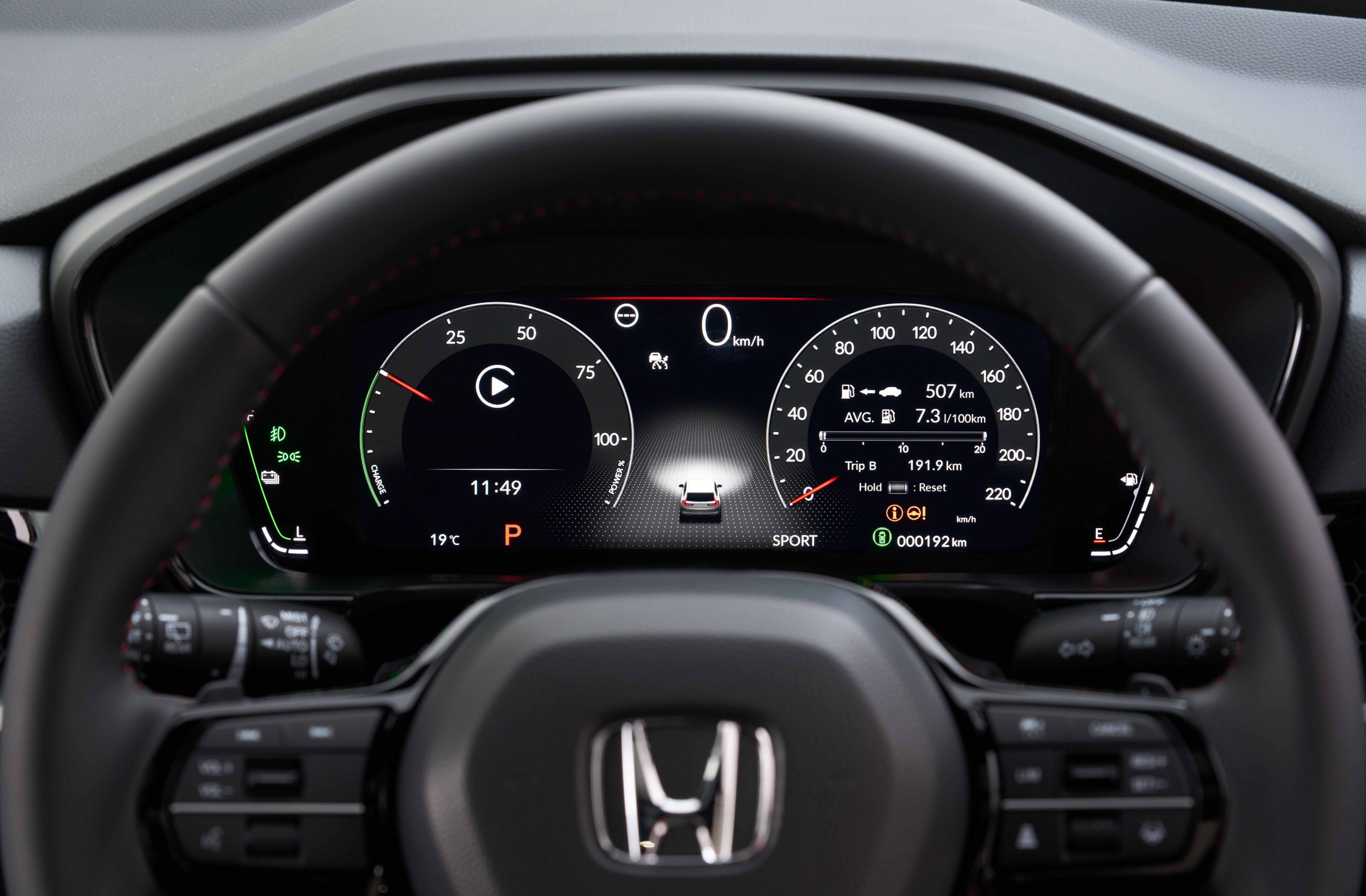
The CR-V AWD Sport model (that we didn’t get to test) now has a 50/50 and 60/40 power distribution facilities for safe handling and cornering, making it best for cornering performance on both off road and highways.
The list of attributes for the new CR-V went on and on, the grille is active for heating and cooling, the seats improve posture, there’s better entry and exit for the 3rd row, all three models will tow (from 1,000kg to 750kg) and there’s even an app that will remote start the CR-V, find it (should you forget where you parked it?) and set your AC temperature. I could of course go on, and on, and on.
With the information still rattling around our heads, it was time to get up close and personal with the new Honda CR-V and by that I mean take it on a near 6 hour drive to Christchurch!
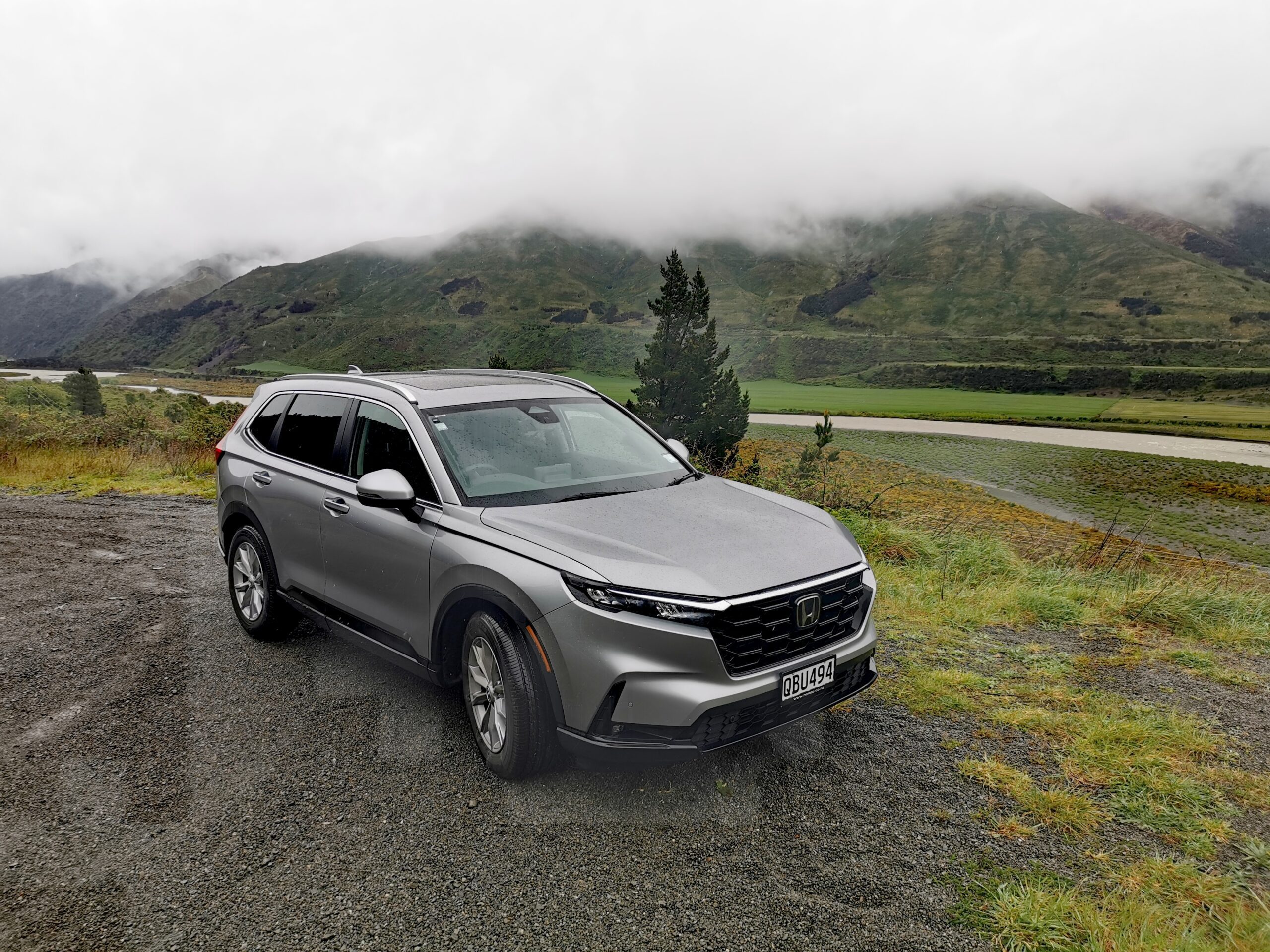
With two models on offer (the Sport 7 and the RS) I opted for the 7 first. In terms of price, it sits in the middle of the current range ($57k) but certainly doesn’t appear lacking.
Our first leg took us on a glorious three and a half hour drive south to Hanmer Springs, travelling along SH6 and 65 but more importantly traversing some challenging terrain and through the desolate Lewis Pass – what’s more, it was raining and at one point, sleet. The Sport 7 didn’t bat an eyelid, in fact it relished the conditions urging me to push on.
The acceleration is quick and unhindered by turbo lag, especially when you pull the gearstick back to S. Overtaking is simple, astonishing in fact as the 1.5L continues to give way past the ‘safe to move back in’ stage. As previously mentioned, the Sensing suite has been upgraded and that meant that the lane keep assist/alert warnings flashed up a lot, obviously this was due to my enthusiastic driving manner, but to switch it off meant menu diving and it comes back on when you restart the SUV so what’s the point – better to drive more civil?
Visibility is great all round, especially out the front and the steering felt precise, with plenty of feedback, and when you add in its firm ride, the vast array of corners during the first stint, really increased the heart rate.
Lunch was at the Fire & ICE restaurant (I had fish and chips if you really must know) and I traded my pure ICE engined CR-V for the Hybrid e:HEV for the more mature two and a half drive to Christchurch.
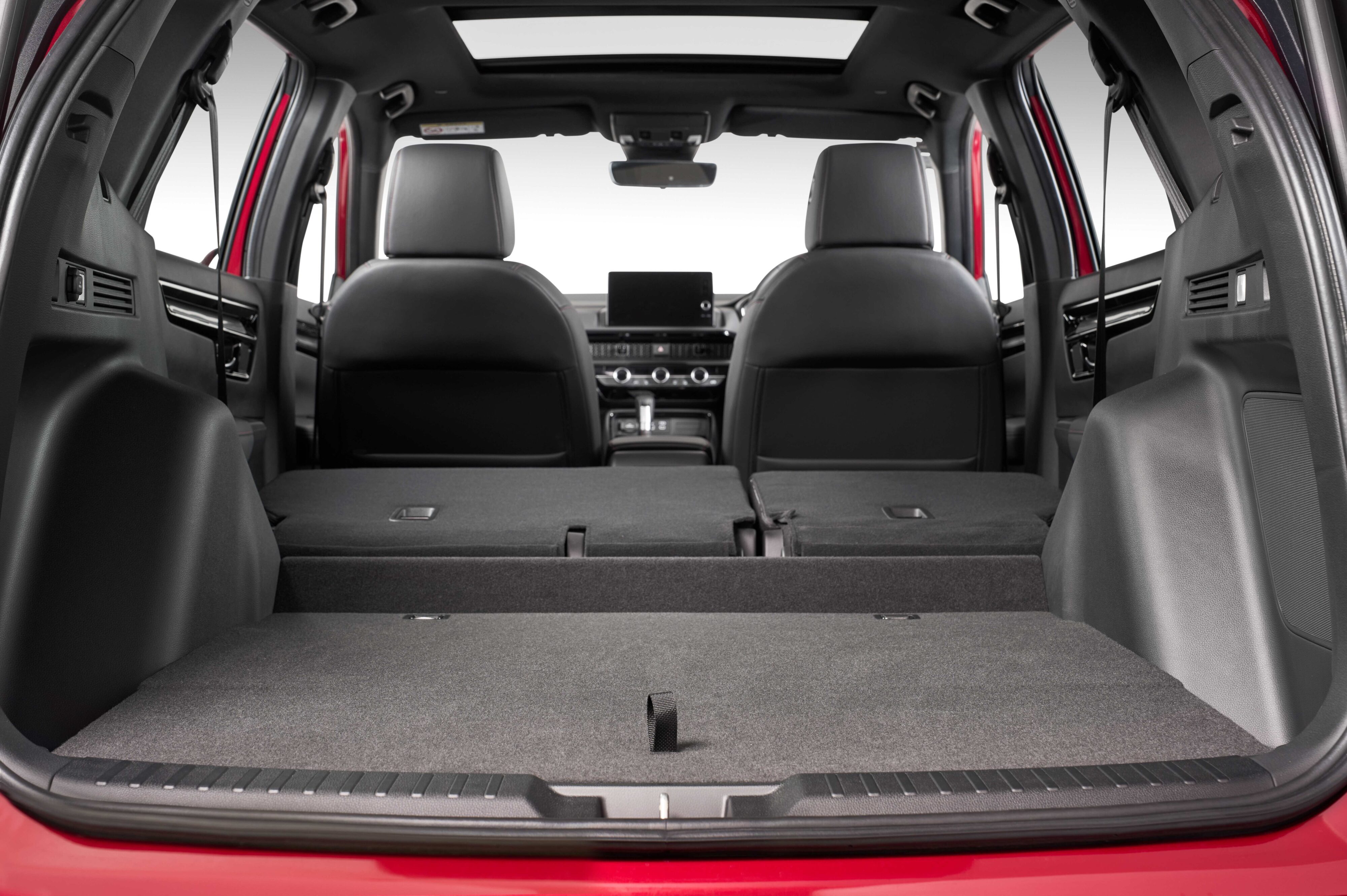
With long straights on offer I flicked on the adaptive cruise for a while and let my lunch settle. The RS is quicker off the mark than the Sport and quieter too (when the engine isn’t alive). The paddles scrubbed some speed off at the corners while adding range too, and I have to say the flow meter is fun to watch.
Half an hour down the road and with the food more settled, it was time to take the reins again. Off went the adaptive cruise and down went the accelerator. The power is delivered in a really predictable manner and despite its size difference over the ZR-V, it feels more rapid and arguably a better, more confident ride. The Improvements in sound system and instrumentation made for a more upmarket feel too, and of the two, the RS would be my pick – you do get a lot more for your extra $10k (and who uses the third row anyway).
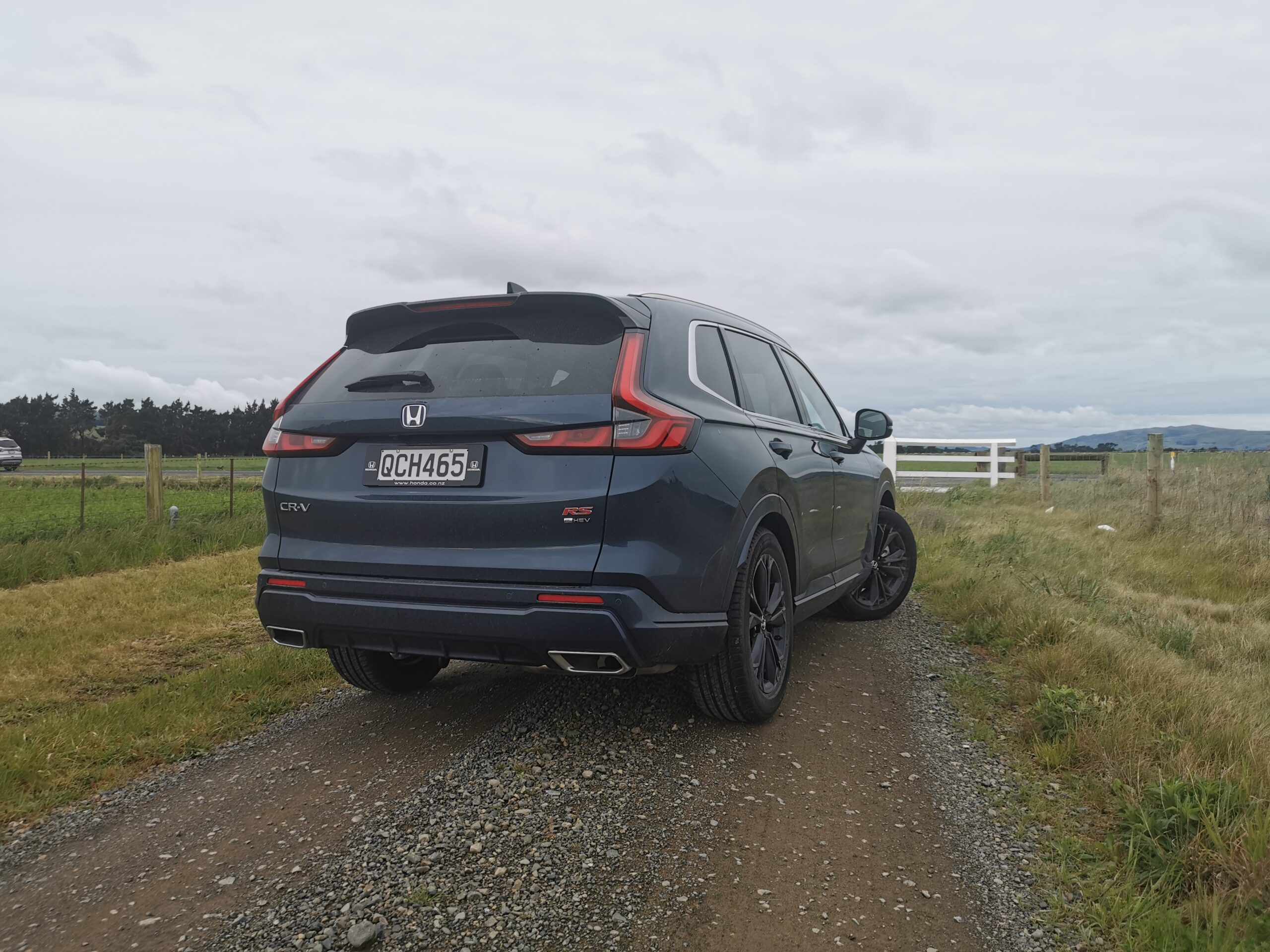
Honda NZ were all smile and high fives about this sixth generation CR-V and it’s easy to see why, it’s bigger and bolder, more powerful and more connected, and what’s more, 96 of their first 110 sales (in the first hour or so) was the RS e:HEV, that should be testament enough for anyone. Looking forward to doing a follow up full review.
